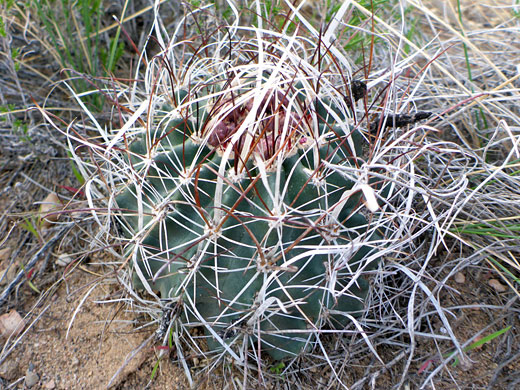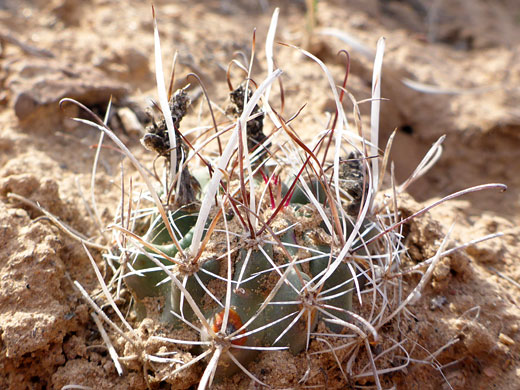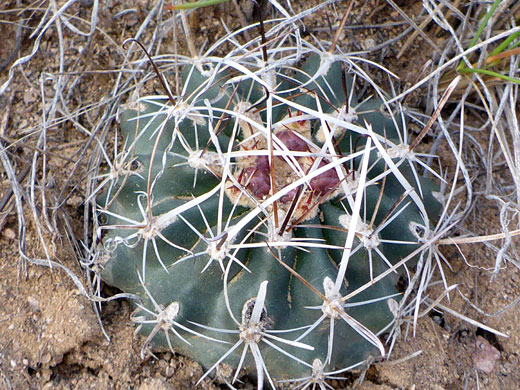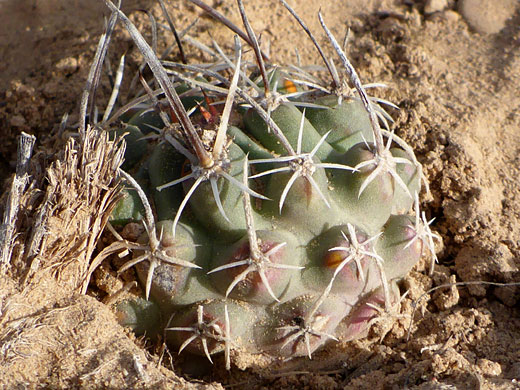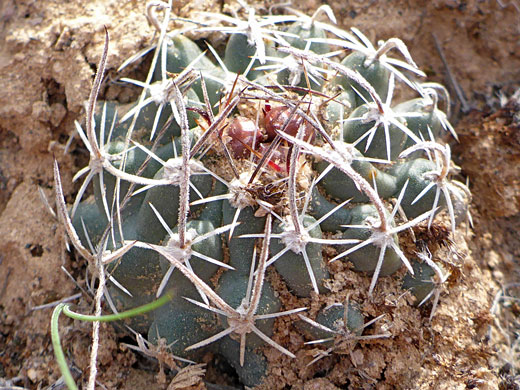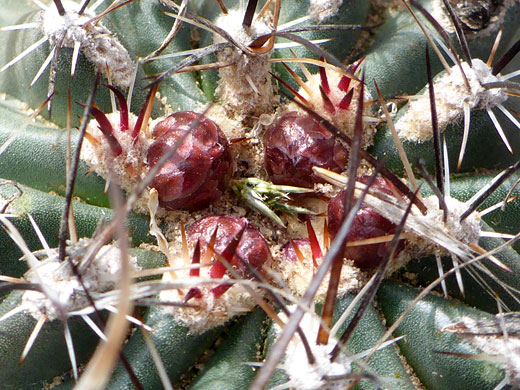Scientific name:
Sclerocactus spinosior
Common name:
Desert valley fishhook cactus
Range:
The Great Basin Desert of western Utah
Form:
Globes, becoming cylindrical with age
Habitat:
Pinyon-juniper woodland, sagebrush flats, from 5,000 to 6,500 feet
Flowers:
Deep pink, appearing April to May.

Distribution map for sclerocactus spinosior
Sclerocactus spinosior occurs over a relatively large area, 200 miles or more of the western Utah deserts, but is not easy to find, since individual populations are small and localized, and plants are often mostly covered by the soil, especially during dry periods. They have also been subject to illegal collection.
The unbranched stems, globes or short cylinders, are usually up to 6 inches tall and 4 inches across, with 13 or 14 ribs bearing conspicuous tubercles. Each areole has between 6 and 10 thin radial spines, white with brown tips, up to 1.5 inches long, and (usually) 6 central spines. Of these, the uppermost is white, flattened, 2 inches or more in length, the lower three are red to brown, and a little shorter, while the remaining two, lateral, are shorter still, colored reddish brown. One or two of the lower (abaxial) spines are hooked.
Flowers are relatively narrow; funnel-shaped, 2 inches long and 1 inch across, the tepals dark pink, with paler margins, not fringed. Outer tepals have brownish midstripes. Anthers are yellow, their filaments variously colored pink, red, green or yellow.
The unbranched stems, globes or short cylinders, are usually up to 6 inches tall and 4 inches across, with 13 or 14 ribs bearing conspicuous tubercles. Each areole has between 6 and 10 thin radial spines, white with brown tips, up to 1.5 inches long, and (usually) 6 central spines. Of these, the uppermost is white, flattened, 2 inches or more in length, the lower three are red to brown, and a little shorter, while the remaining two, lateral, are shorter still, colored reddish brown. One or two of the lower (abaxial) spines are hooked.
Flowers are relatively narrow; funnel-shaped, 2 inches long and 1 inch across, the tepals dark pink, with paler margins, not fringed. Outer tepals have brownish midstripes. Anthers are yellow, their filaments variously colored pink, red, green or yellow.
All Contents © Copyright The American Southwest | Comments and Questions | Contribute | Affiliate Marketing Disclosure | Site Map
